

Twitter. Twitter. California State University, Los Angeles - Academia.edu. Manuel Aguilar-Moreno - Aztec World. Ver este informe en Español.

Art A main function of Aztec Art was to express religious and mythical concepts to legitimize the power of the State. This artistic language spoke predominantly through the form of iconographic symbols and metaphors. For example, the image of the eagle symbolized the warrior and the sun at its zenith. Images of serpents were linked to the gods Tlaloc and Huitzilopochtli, and thus were represented as water or fire serpents, respectively.
It is unwise and misleading for modern Western scholars to label most forms of Aztec expression as fine art. For those with a fast connection, download the complete PDF file: Aztec Art by Manuel Aguilar-Moreno (3.8 MB) With dial up or a slower connection, we suggest downloading the following smaller files: Aztec Art Part I by Manuel Aguilar-Moreno (2.77 MB) Aztec Art Part II by Manuel Aguilar-Moreno (1.32 MB) Architecture Aztec Art & Architecture – Text only (857 KB) Aztec Art & Architecture – Text & Images (10.9 MB) Dr. Publicdomainreview. The Codex Mendoza is an Aztec codex, created about twenty years after the Spanish conquest of Mexico with the intent that it be seen by Charles V, the Holy Roman Emperor and King of Spain.

It contains a history of the Aztec rulers and their conquests, a list of the tribute paid by the conquered, and a description of daily Aztec life, in traditional Aztec pictograms with Spanish explanations and commentary. It is named after Antonio de Mendoza, then the viceroy of New Spain, who may have commissioned it. After creation in Mexico City, it was sent by ship to Spain. HandbooktoLifeintheAztecWorld. Ulama The Pre-Columbian Ballgame Survives Today.
We are most grateful to Panel of Experts member Dr.
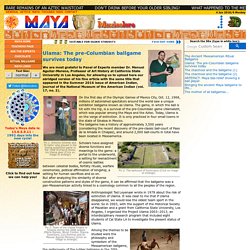
Feeding the gods: Hundreds of skulls reveal massive scale of human sacrifice in Aztec capital. The priest quickly sliced into the captive's torso and removed his still-beating heart.
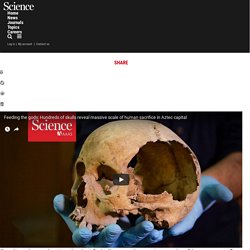
That sacrifice, one among thousands performed in the sacred city of Tenochtitlan, would feed the gods and ensure the continued existence of the world. Death, however, was just the start of the victim's role in the sacrificial ritual, key to the spiritual world of the Mexica people in the 14th to the 16th centuries. Priests carried the body to another ritual space, where they laid it face-up. Mexico City. The Child Martyrs of Tlaxcala - Mexico Unexplained. Podcast: Play in new window | Download Pope Francis had made his decision.
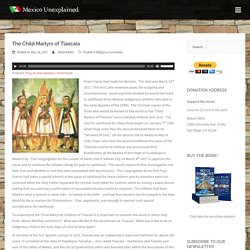
The date was March 23rd 2017. This first Latin American pope, the outgoing and unconventional Jesuit argentino decided he would fast-track to sainthood three Mexican indigenous children who died in the early decades of the 1500s. Estudio de policromía revela identidad de los hermanos de Coyolxauhqui. *** Un conjunto escultórico descubierto hace 39 años en el Templo Mayor de Tenochtitlan, estaría representando, además de los hermanos de la diosa lunar, a las deidades del pulque y de la lluvia *** El monumento más conocido de Coyolxauhqui fue descubierto el 21 de febrero de 1978 Mediante el análisis de la policromía en escultura en piedra para obtener información valiosa no detectable a simple vista, se ha revelado la compleja identidad de nueve tallas con más de 580 años de antigüedad descubiertas en las excavaciones del Templo Mayor de México-Tenochtitlan, un corpus escultórico que representa a los hermanos caídos de Coyolxauhqui, pero también a las deidades del pulque y de la lluvia.
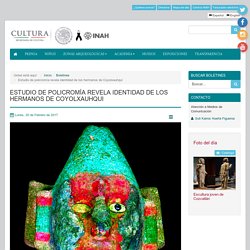
Hace 39 años, durante las primeras temporadas del Proyecto Templo Mayor, la arqueóloga Elsa Hernández Pons dio con las nueve efigies erguidas como parte de la excavación de una ofrenda de clausura. En principio se tomaron una serie de fotografías de alta resolución de cada escultura. Discovery of Aztec document reveals early history of Christianity in Cortés' Mesoamerica. Ancient Aztec temple, ball court found in the heart of Mexico City. MEXICO CITY(AFP).- A giant temple to the Aztec god of the wind and a court where the Aztecs played a deadly ball game have been discovered in the heart of Mexico City.
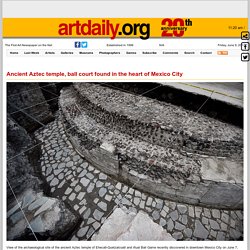
Archaeologists unveiled the rare finds Wednesday after extensive excavations, giving journalists a tour of the semi-circular temple of Ehecatl-Quetzalcoatl and nearby ball court. Records indicate that Spanish conquistador Hernan Cortes first watched the ritual Aztec ball game at the court in 1528, invited by the last Aztec emperor, Montezuma -- the man whose empire he went on to conquer.
Historians believe the game involved players using their hips to keep a ball in play -- as well as ritual human sacrifices. Unearthing the secrets of the Aztecs. For more than two decades, leading Mexican archaeologist Eduardo Matos Moctezuma directed the excavations of the main Aztec temple, located in the ancient capital of Tenochtitlan, in what is now Mexico City's famous central square.
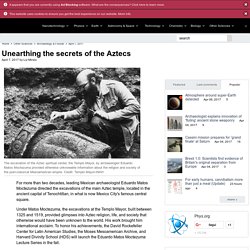
Under Matos Moctezuma, the excavations at the Templo Mayor, built between 1325 and 1519, provided glimpses into Aztec religion, life, and society that otherwise would have been unknown to the world. His work brought him international acclaim. To honor his achievements, the David Rockefeller Center for Latin American Studies, the Moses Mesoamerican Archive, and Harvard Divinity School (HDS) will launch the Eduardo Matos Moctezuma Lecture Series in the fall. Mesolore: A research & teaching tool on Mesoamerica. People in Late Postclassic Central Mexico used a ritual calendar of 260 days.
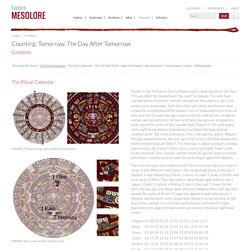
This was called the tonalpohualli (“day count”) in Nahuatl. The same basic calendar had been used for centuries throughout Mesoamerica, and is still used in some areas today. Each day in this cycle had its own distinct name, created by a combination of the numbers 1 to 13 (represented by a series of dots) and one of twenty day signs (represented by small pictures of objects, animals, and natural forces). Artists, Materials, and the Creation of the Florentine Codex. Archival Program Information For current Research Institute events, please see The Getty Event Calendar Thursday, November 7, 2013 7:00 p.m.
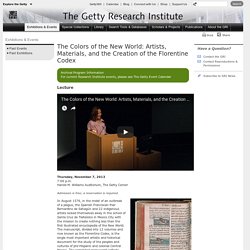
Harold M. General History of the Things of New Spain by Fray Bernardino de Sahagún: The Florentine Codex. Historia general de las cosas de nueva España (General history of the things of New Spain) is an encyclopedic work about the people and culture of central Mexico compiled by Fray Bernardino de Sahagún (1499–1590), a Franciscan missionary who arrived in Mexico in 1529, eight years after completion of the Spanish conquest by Hernan Cortés. Commonly called the Florentine Codex, the manuscript came into the possession of the Medici no later than 1588 and is now in the Medicea Laurenziana Library in Florence. Sahagún began conducting research into indigenous cultures in the 1540s, using a methodology that scholars consider to be a precursor to modern anthropological field technique.
His motives were primarily religious: he believed that to convert the natives to Christianity and eradicate their devotion to false gods, it was necessary to understand those gods and the hold they had on the Aztec people.